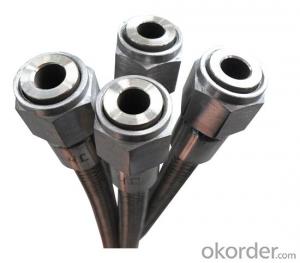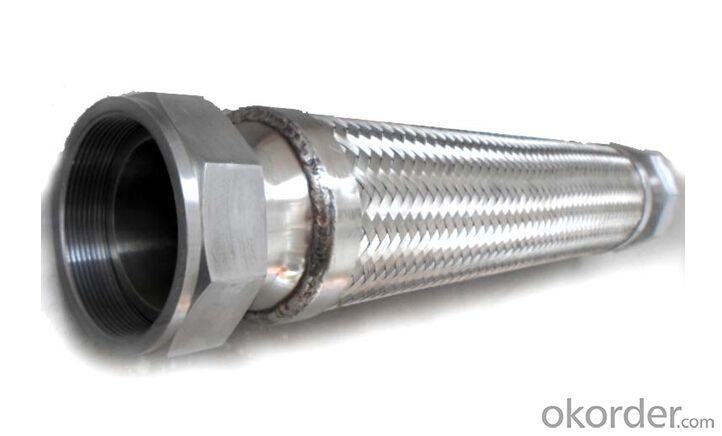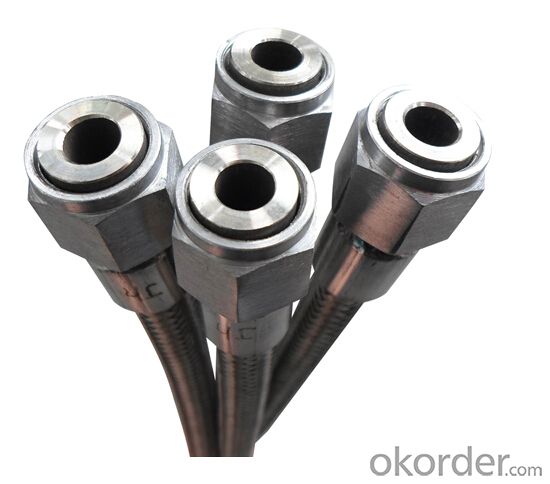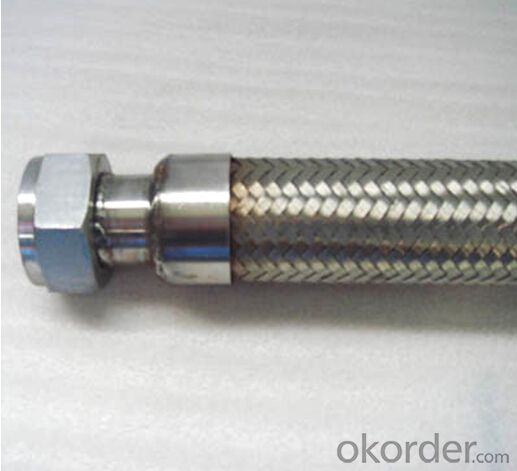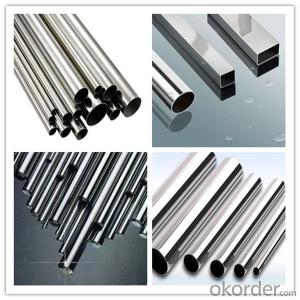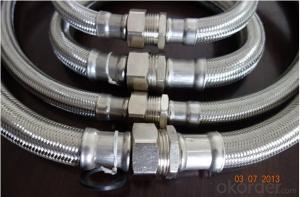Stainless Steel Braid Hose with Flexible Material
- Loading Port:
- Tianjin
- Payment Terms:
- TT OR LC
- Min Order Qty:
- 1000 pc
- Supply Capability:
- 100000 pc/month
OKorder Service Pledge
OKorder Financial Service
You Might Also Like
Specification
Stainless Steel Braid Hose with Flexible Material
Applications of Stainless Steel Braid Hose with Flexible Material:
--Refueling system
--Chemical and pharmaceutical industry
--Industrial hydraulic systems
--Air conditioners in industrial and construction –site vehicles
--Food and beverage industry
--Special and standard industrial applications
--Water and cleaning management
Features of Stainless Steel Braid Hose with Flexible Material:
1. )O. D.: 13-18MM 0.2-3M long
2. )Nut.: Nickel/Chrome Plated Brass (Zinc / Iron / Aluminum is available)
3. )Size Of Nut.: Female&Male 1/2''; 3/4''; 3/8''; 7/8''; 5/16'', and M10...
4. )Insert.: Brass (Zinc / Aluminum / Plastic is available)
5. )Inner tube.: Rubber/ EPDM/PVC
6. )Covered Material: Stainless Steel 201, 301, 304 /Aluminium Wire
7. )Working Pressure: 5Kg-15Kg
8. )Temperature: 0-92° C
9. )Quality Assurance: 3 years
RemarkAPPLICATION: HOUSEEHOLD WARE, BATHROOM WARE, SHOWER HOSE
PAYMENT: T/T, L/C
DELIVERY TIME: 20DAYS OR 30DAYS AFTER RECEIVED 30% DEPOSITS
MOQ: 5000PCS
ODM&OEM IS ACCEPTABLE
PackageInner: PP bag /Blister packing Outer: Carton box
Specifications of Stainless Steel Braid Hose with Flexible Material:
NO | I.D | Refer to O.D | Working pressure | Burst pressure | approximate Weight | |||||
(inch) | (mm) | (inch) | (mm) | MPa | Psi | MPa | Psi | kg/m | lbs/ft | |
1 | 1/8 | 3.2±0.2 | 0.35 | 9±0.3 | 2.06 | 300 | 8.27 | 1200 | 0.078 | 0.12 |
2 | 5/32 | 4±0.2 | 0.4 | 10±0.3 | 2.06 | 300 | 8.27 | 1200 | 0.092 | 0.14 |
3 | 3/16 | 4.8±0.2 | 0.43 | 11±0.3 | 2.06 | 300 | 8.27 | 1200 | 0.108 | 0.16 |
4 | 1/4 | 6.3±0.3 | 0.5 | 12.7±0.3 | 2.06 | 300 | 8.27 | 1200 | 0.134 | 0.2 |
5 | 5/16 | 8.0±0.3 | 0.56 | 14±0.3 | 2.06 | 300 | 8.27 | 1200 | 0.147 | 0.22 |
6 | 3/8 | 9.5±0.3 | 0.63 | 16±0.4 | 2.06 | 300 | 8.27 | 1200 | 0.182 | 0.27 |
7 | 15/32 | 12±0.3 | 0.75 | 19±0.5 | 2.06 | 300 | 8.27 | 1200 | 0.238 | 0.35 |
8 | 1/2 | 12.7±0.4 | 0.78 | 20±0.5 | 2.06 | 300 | 8.27 | 1200 | 0.262 | 0.39 |
9 | 5/8 | 16±0.4 | 0.94 | 24±0.5 | 1.03 | 150 | 4.12 | 600 | 0.351 | 0.52 |
10 | 3/4 | 19±0.4 | 1.13 | 28.8±0.5 | 1.03 | 150 | 4.12 | 600 | 0.515 | 0.77 |
11 | 1 | 25.4±0.5 | 1.38 | 35±0.6 | 1.03 | 150 | 4.12 | 600 | 0.637 | 0.95 |
Images of Stainless Steel Braid Hose with Flexible Material:
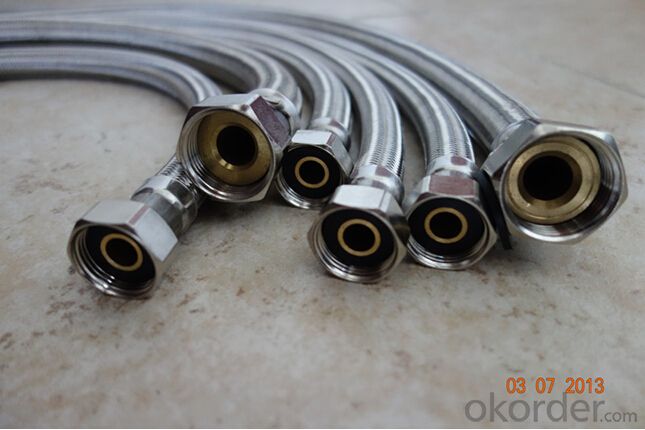
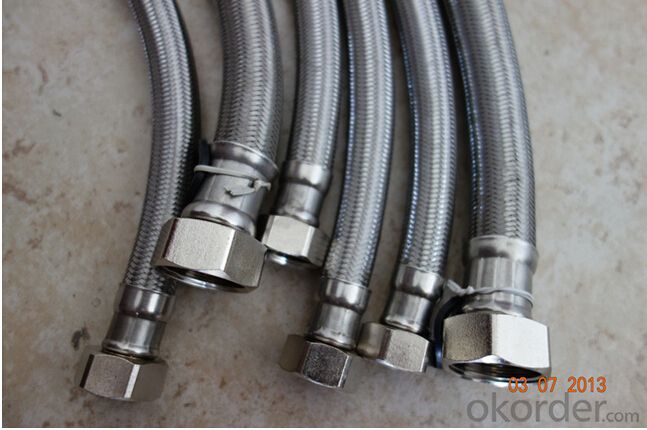
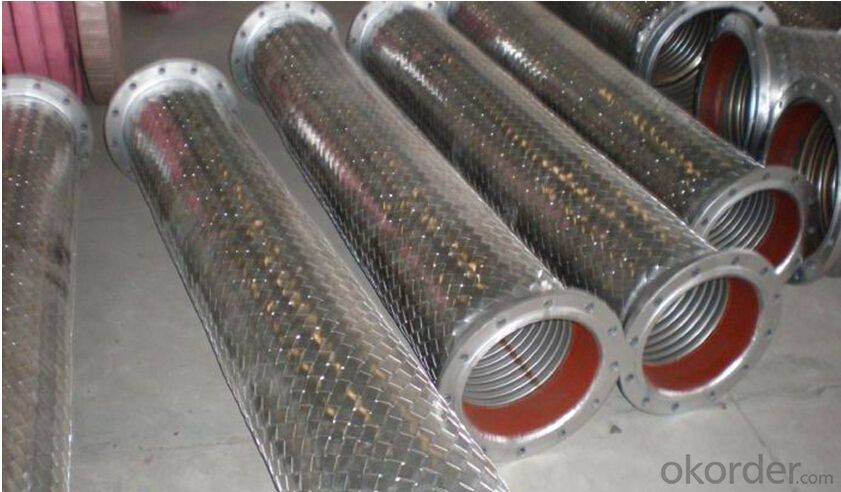
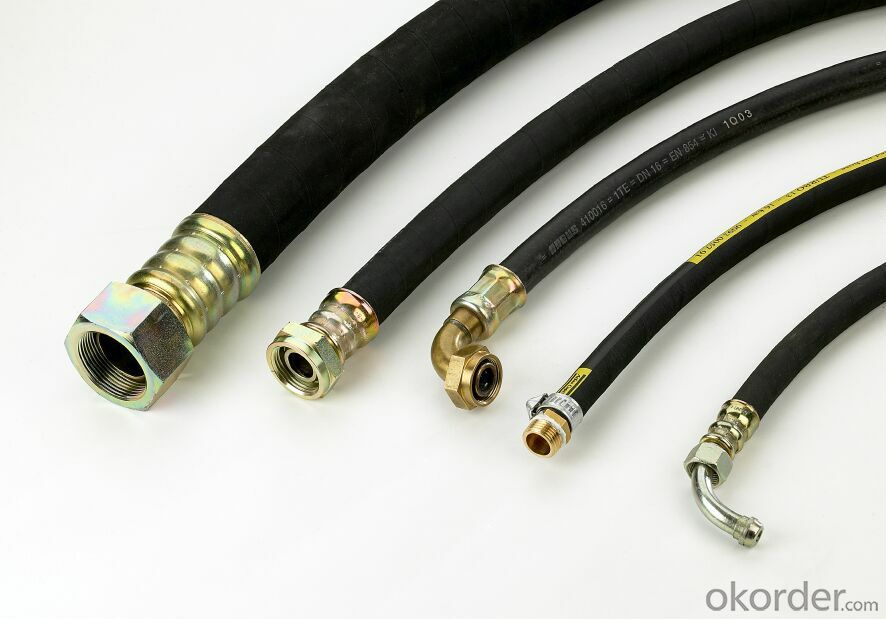
Package of Stainless Steel Braid Hose with Flexible Material:
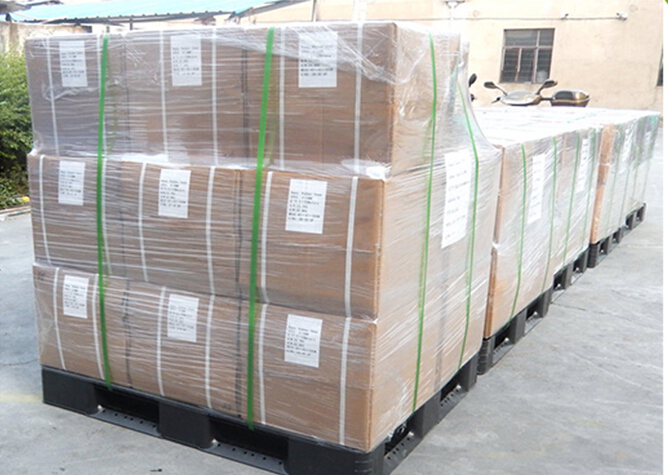
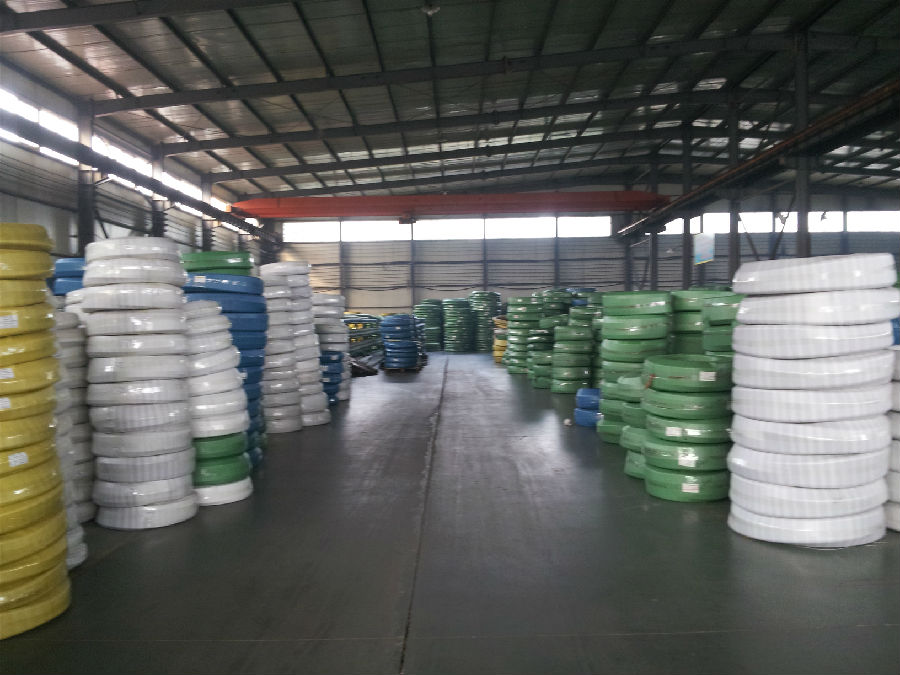
FAQ of Stainless Steel Braid Hose with Flexible Material:
Who we are:
Answer: We CNBM is a Chinese state-owned enterprise ranked 267th among the Global Fortune 500, as the largest building materials company,we have over 300 affiliated companies,and so many production lines and branch office distribute in China.
2. About our quality:
Answer: Every product needs to be quality proved before shipping.
3. About our service:
Answer: We could gurantte that we can reply you in 2 working hours.
- Q: What color is stainless steel? What color is stainless steel pipe culture?
- Stainless steel tubes for industrial use are mostly iron gray, and civilian stainless steel is bright silver.
- Q: Can stainless steel pipes be hydrotested?
- Yes, stainless steel pipes can be hydrotested. Hydrostatic testing is a common method used to check the integrity and strength of pipes, regardless of the material they are made from. Stainless steel pipes can withstand hydrostatic pressure well and are frequently subjected to hydrotesting to ensure they meet safety and quality standards.
- Q: What is stainless steel decorative tube? What uses does it have?
- Stainless steel decorative tubes, decorative stainless steel tubes, made of stainless steel anti-theft windows, stainless steel railings, stainless steel staircase handrails, interior modeling, etc.
- Q: Can stainless steel pipes be used for sewage and wastewater systems?
- Yes, stainless steel pipes can be used for sewage and wastewater systems. Stainless steel is known for its excellent corrosion resistance, making it highly suitable for applications involving water and sewage. It is resistant to rust, corrosion, and chemical reactions, which ensures a longer lifespan and reduces the need for frequent replacements. Stainless steel pipes also have a smooth surface that prevents the accumulation of debris and facilitates easy cleaning. Additionally, stainless steel is non-porous, preventing the growth of bacteria and fungi, making it hygienic and suitable for sewage and wastewater systems. Its durability, reliability, and resistance to harsh environmental conditions make stainless steel pipes a popular choice for these applications.
- Q: What is the difference between 321 and 316 stainless steel pipes?
- The main difference between 321 and 316 stainless steel pipes lies in their composition and applications. 321 stainless steel contains titanium, which helps improve its resistance to intergranular corrosion and high temperatures, making it suitable for applications in the aerospace and automotive industries. On the other hand, 316 stainless steel is more corrosion-resistant overall and is commonly used in marine environments or for applications involving exposure to chemicals or saltwater.
- Q: Are stainless steel pipes resistant to sea water corrosion?
- Yes, stainless steel pipes are highly resistant to sea water corrosion due to their inherent properties such as chromium content that forms a protective film on the surface, preventing corrosion and ensuring durability in marine environments.
- Q: Are stainless steel pipes suitable for vacuum systems?
- Stainless steel pipes are ideal for vacuum systems due to their impressive qualities. Renowned for their strength, durability, and resistance to corrosion, stainless steel pipes are a top-notch choice for vacuum applications. They provide a remarkable level of leak-tightness, ensuring that the desired vacuum level is maintained without any loss. Moreover, these pipes exhibit low outgassing rates, which is vital for maintaining a pristine and contaminant-free vacuum environment. Additionally, stainless steel pipes are compatible with a wide array of gases and fluids commonly used in vacuum systems, making them a versatile material for diverse applications. In summary, stainless steel pipes are a dependable and efficient option for vacuum systems, thanks to their outstanding mechanical properties and resistance to both internal and external factors that may impact vacuum performance.
- Q: Are stainless steel pipes suitable for drinking water applications?
- Yes, stainless steel pipes are suitable for drinking water applications. Stainless steel is highly resistant to corrosion, which ensures the water remains free from contaminants. It also has a smooth surface that prevents the accumulation of bacteria or impurities, making it a safe and hygienic choice for transporting drinking water.
- Q: How can I clean the stainless steel tube?
- Can be soaked in soapy water and cleaned with a mild sponge pad. After washing, remember to rinse and dry the stainless steel.
- Q: What is the maximum diameter of stainless steel pipes available?
- The maximum diameter of stainless steel pipes available can vary depending on the manufacturer and specific requirements, but they can typically range from a few millimeters to several meters in diameter.
Send your message to us
Stainless Steel Braid Hose with Flexible Material
- Loading Port:
- Tianjin
- Payment Terms:
- TT OR LC
- Min Order Qty:
- 1000 pc
- Supply Capability:
- 100000 pc/month
OKorder Service Pledge
OKorder Financial Service
Similar products
Hot products
Hot Searches
Related keywords

